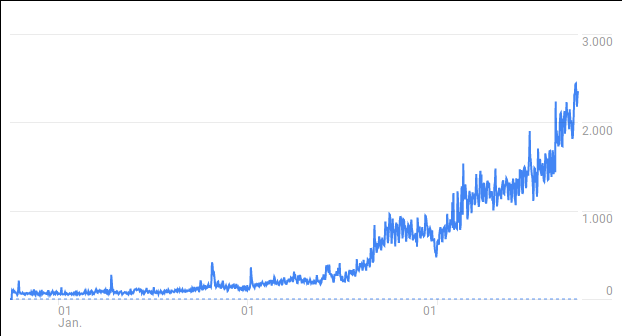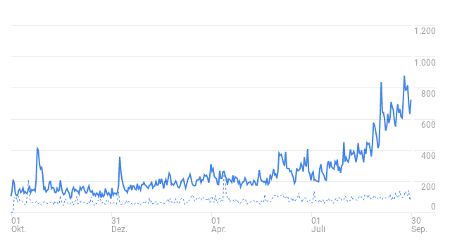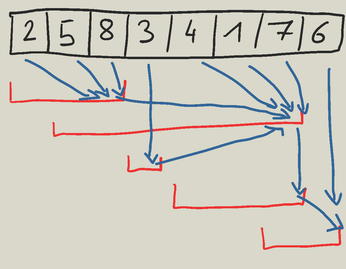For everybody new to cp-algorithms.com. It is a community project, that started as a translation project of the Russian algorithm website e-maxx.ru. In the meantime most of the articles are translated, multiple new articles have been added, old articles have been improved and extended. In total we have 143 article about different competitive programming topics, anything from algebra, graphs, string algorithms, data structures, geometry, and more. So check it out ;-)
Although in the last months not many improvements/new articles has been done (I've been busy with work/study), the website is still growing a lot. Especially last October we had a lot of new content. A year ago we had translated only 71% of the Russian articles from e-maxx.ru, today over 85% are translated. And according to Google Analytics the number of users is growing still a lot. Last year we had over 250.000 users. The following graph shows the user numbers of the last 3 years.

As every year, we want to remind people of the Hacktoberfest. It is an initiative by DigitalOcean. They will award everyone (well, actually the first 50.000 people) which will make 4 pull-requests on Github during the month of October with a cool, free shirt.
As we also develop cp-algorithms.com using Github (see link), this is a perfect opportunity to join our project, help a little, and earn a free shirt. You just need to register on their website, connect your Github account and start making pull-requests.
If you want to join, we prepared a page explaining how to contribute to the project, and how to make a pull-request on Github. Take a look here: link
We use Markdown, Latex (for mathematical formulas) and Git/Github for development. Markdown and Git are very simple technologies, that everybody has to know if he ever wants to work in IT. And Latex is also taught at any technical university. So you don't have to learn any new difficult technologies, that you can't use in other projects or in your job.
You don't talk Russian? No problem, I also understand not a single article without the help of a translator. Luckily there are really good automatically translators, that you can use. Google translate and Yandex translate work pretty good. They are not perfect (e.g. Google translate might say top instead of vertex), but from the context it is always clear what the correct translation should be.
So what exactly are the task that you can help us with? We are pretty much open for everything:
- Translating an article. Here you can see the list of all articles that still need a translation. (Warning! Only choose to translate an article that you understand very well. Some of the remaining articles are quite advanced.)
- Write a new article. There are still many topics that are not covered. For instance:
- Binary search
- Introduction to dynamic programming
- SOS DP
- Digit DP
- ...
- Improve old articles. E.g. some articles are written in a bad style of English, some of the explanations are pretty bad, some code pieces are unnecessary long, or the opposite — too short, ...
- Add practice problems
- Add images
- Styling: the website looks quite old, some redesign could be really cool.
- See the issues page:












